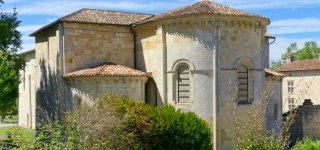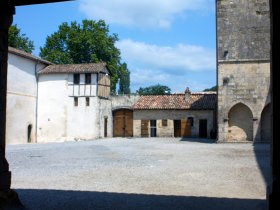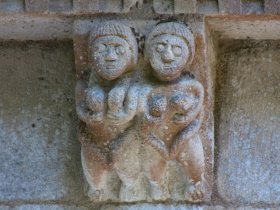ARTHOUS ABBEY
Located in Hastingues, Arthous Abbey retains vestiges of its 12th century foundations and its many lives. A site rich in history, restored and open to visits all year round.
History and evolution of the Abbey of Arthous
The Abbey of Arthous is worth the detour due to its location: it is located at the crossroads of the Landes and the Basque Country, a location born of a strategy of unification during its construction in the 12th century. Initially, the abbey actually had a function of evangelizing the various neighboring towns. Subsequently, it fulfilled a role of economic provider of the various priories and hospitals.
Partially destroyed during the Wars of Religion between 1523 and 1571, Arthous Abbey subsequently lost its local aura. During the French Revolution, it declined until it served as a barn for the neighboring municipalities. It was not until 1964 that the Landes department began its restoration. The conventual wings are restored, as well as the facade of the church.
The entire abbey was listed as a historic monument in 1969 and now houses an archeology museum as well as a heritage research and discovery department.
Architecture of Arthous Abbey
Arthous Abbey has kept only part of its original structure. However, some of its elements are of historical interest, starting with the facade of the church, adorned with sculptures of medieval figures and fantastic animals.
Another interesting space, the conventual buildings, restored by the department, which make it possible to discover the living space of the canons of the time.
Visit Arthous Abbey
Arthous Abbey has several areas: an archaeological research area, a museum and a trail open to visitors, which traces the eventful history of the abbey: the route takes you up the restored cells of the canons by unrolling the 800 years of the place, since its daily construction of the canons through its various functions, then its final restoration. Models and interactive terminals make the route fun for all ages.
If you are interested in archeology, go to the museum part of the abbey, located in the private chapel and the treasure room. Here, sculptures of horses are exhibited, dated to the Paleolithic era.
Finally, exhibitions and workshops are offered throughout the year to perpetuate the memory of the place and travel through time with tales, creations by artists in residence and creative courses.




